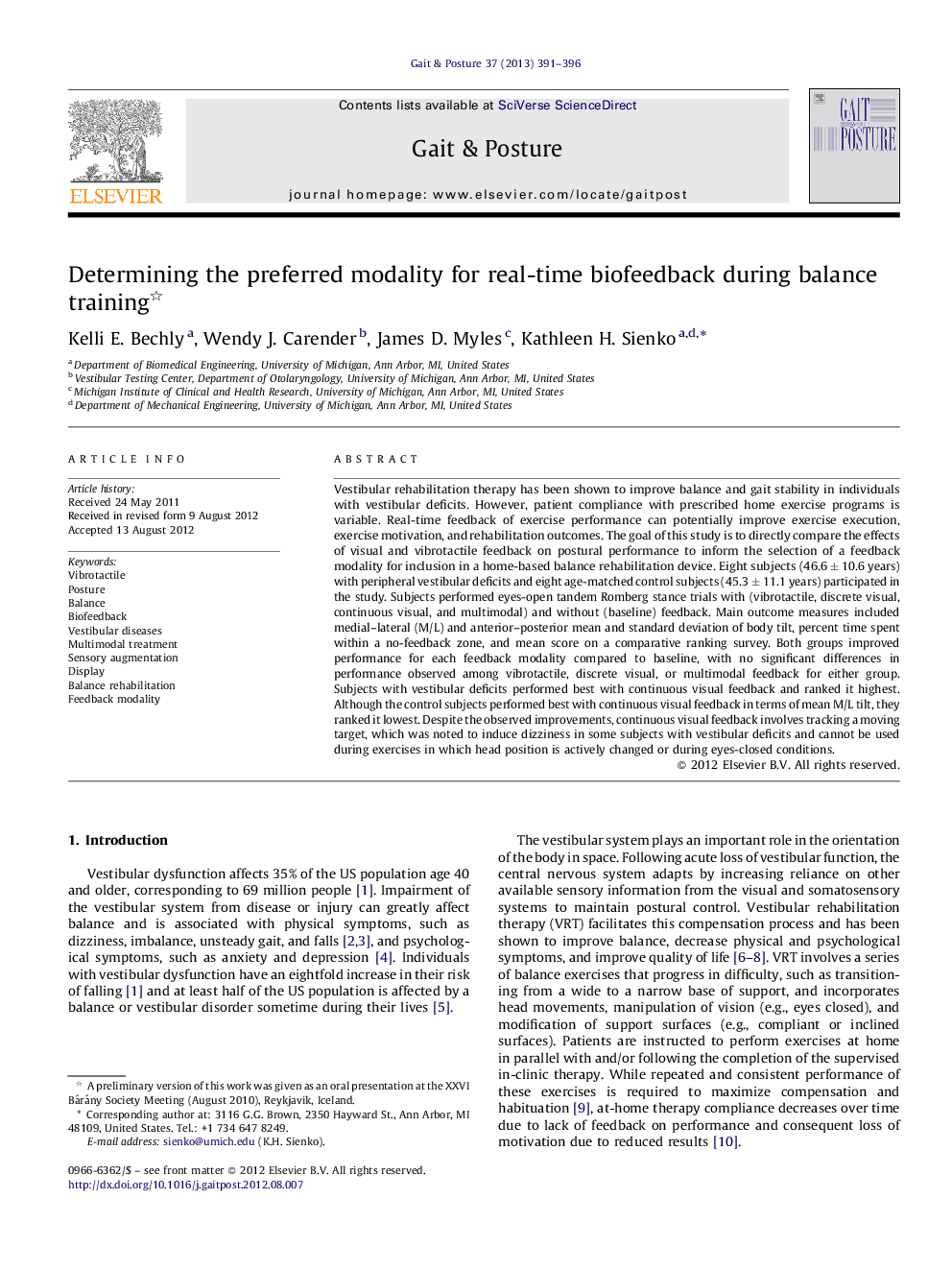| کد مقاله | کد نشریه | سال انتشار | مقاله انگلیسی | نسخه تمام متن |
|---|---|---|---|---|
| 6207570 | 1265663 | 2013 | 6 صفحه PDF | دانلود رایگان |

Vestibular rehabilitation therapy has been shown to improve balance and gait stability in individuals with vestibular deficits. However, patient compliance with prescribed home exercise programs is variable. Real-time feedback of exercise performance can potentially improve exercise execution, exercise motivation, and rehabilitation outcomes. The goal of this study is to directly compare the effects of visual and vibrotactile feedback on postural performance to inform the selection of a feedback modality for inclusion in a home-based balance rehabilitation device. Eight subjects (46.6 ± 10.6 years) with peripheral vestibular deficits and eight age-matched control subjects (45.3 ± 11.1 years) participated in the study. Subjects performed eyes-open tandem Romberg stance trials with (vibrotactile, discrete visual, continuous visual, and multimodal) and without (baseline) feedback. Main outcome measures included medial-lateral (M/L) and anterior-posterior mean and standard deviation of body tilt, percent time spent within a no-feedback zone, and mean score on a comparative ranking survey. Both groups improved performance for each feedback modality compared to baseline, with no significant differences in performance observed among vibrotactile, discrete visual, or multimodal feedback for either group. Subjects with vestibular deficits performed best with continuous visual feedback and ranked it highest. Although the control subjects performed best with continuous visual feedback in terms of mean M/L tilt, they ranked it lowest. Despite the observed improvements, continuous visual feedback involves tracking a moving target, which was noted to induce dizziness in some subjects with vestibular deficits and cannot be used during exercises in which head position is actively changed or during eyes-closed conditions.
⺠Effects of visual and vibrotactile biofeedback on postural performance are compared. ⺠Vestibulopathic and age-matched controls improved performance with biofeedback. ⺠Subjects with vestibular deficits performed best with continuous visual feedback. ⺠Visual feedback induced dizziness in some subjects and has certain limitations. ⺠Results will inform biofeedback modality for use in a balance rehabilitation device.
Journal: Gait & Posture - Volume 37, Issue 3, March 2013, Pages 391-396